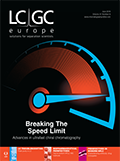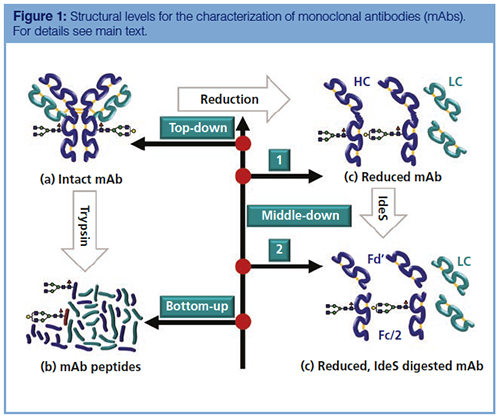The 32nd International Symposium on Chromatography (ISC 2018)
The 32nd International Symposium on Chromatography (ISC 2018) will be held on 23Ð27 September 2018 in Cannes-Mandelieu, France.
Photo Credit: ISC2018

The 32nd International Symposium on Chromatography (ISC 2018) will be held on 23–27 September 2018 in Cannes-Mandelieu, France.
ISC 2018 is one of the premier meetings to discuss all modes of chromatography and separation sciences with a broad coverage of techniques and applications.
Through a harmonious combination of oral and poster presentations, tutorials, short courses, vendor lectures and seminars, and an international exhibition on instruments and services, ISC 2018 will provide visitors with the advances, fundamentals, challenges, trends, and applications of separation techniques, chromatography, and mass spectrometry in a wide range of topics.
So far the conference has five confirmed Plenary Lectures to be presented by Alain Beck (Center of Immunology, France), Attila Felinger (University of Pécs, Hungary), Fabrice Gritti (Waters Corporation, USA), Robert Kennedy (University of Michigan, USA), and Peter Schoenmaker (University of Amsterdam, The Netherlands), alongside 33 keynote speakers, six short courses, and six tutorials. The short courses will begin on Sunday 23 September 2018 and will include:
- Analytical Characterization of Protein Biopharmaceuticals with Davy Guillarme (Université de Genève, Switzerland) and Koen Sandra (Research Institute for Chromatography, Belgium)
- Flavours and Fragrances and Analytical Chemistry: An Endless Story with Frédéric Begnaud (Firmenich S.A, Switzerland) and Philippe Darriet (ISVV - Université de Bordeaux, France)
- Development and Control of Robust HPLC Methods by Modeling with Szabolcs Fekete (Université de Genève, Switzerland) and Imre Molnár (MolnárâInstitute for applied chromatography, Germany)
- GC×GC: Fundamental Principles, Processes, and Applications with Philip Marriott (ACROSS, Australia)
- Microextraction-The “Green” Sample Preparation Choice of Next Generation Analytical Chemists with Stig Pedersen-Bjergaard (UiO: School of Pharmacy, Norway) and Janusz Pawliszyn (University of Waterloo, Canada)
- Introduction to Metabolomics Workflow with Serge Rudaz (Université de Genève, Switzerland) and Coral Barbas (Universidad CEU-San Pablo, Spain)
As the Symposium will take place in Cannes-Mandelieu, Côte d’Azur, a fabulous setting in the French Riviera, the organizers hope that the charm and sweetness of the region in September will give ISC 2018 a special flavour.
The Congress and Exhibition Centre (Mandelieu Centre Expo Congrès) is easily accessible via International Airport Nice Côte d’Azur by shuttle, taxi, and train. The area also features more than 1000 hotel rooms that are within walking distance from the Congress Centre.
Mandelieu, the Mimosa Capital, is situated on the Esterel Massif. It offers a fantastic setting for a unique destination in the heart of the Côte d’Azur midway between Saint-Tropez and the Italian border.
In addition to the very exciting five-day conference programme, the organizers hope attendees will find time to sample the attractions of the region. The warm temperature in September in Esterel Massif is an ideal location for trekking. For a scientific adventure visit the Sophia Antipolis Science and Technology Park, where many fragrances and perfumes are created. The organizers recommend tasting the southern version of “French cuisine” and experience the hyphenation of the local food with the local wines (in moderation).
The symposium chairpersons are Didier Thiébaut (CNRS/Université PSL, France), Valérie Pichon (Sorbonne Université-PSL, France), and Jean-Luc Veuthey (Université de Genève, Switzerland). For more information, please visit: www.isc2018.fr

New TRC Facility Accelerates Innovation and Delivery
April 25th 2025We’ve expanded our capabilities with a state-of-the-art, 200,000 sq ft TRC facility in Toronto, completed in 2024 and staffed by over 100 PhD- and MSc-level scientists. This investment enables the development of more innovative compounds, a broader catalogue and custom offering, and streamlined operations for faster delivery. • Our extensive range of over 100,000 high-quality research chemicals—including APIs, metabolites, and impurities in both native and stable isotope-labelled forms—provides essential tools for uncovering molecular disease mechanisms and exploring new opportunities for therapeutic intervention.
New Guide: Characterising Impurity Standards – What Defines “Good Enough?”
April 25th 2025Impurity reference standards (IRSs) are essential for accurately identifying and quantifying impurities in pharmaceutical development and manufacturing. Yet, with limited regulatory guidance on how much characterisation is truly required for different applications, selecting the right standard can be challenging. To help, LGC has developed a new interactive multimedia guide, packed with expert insights to support your decision-making and give you greater confidence when choosing the right IRS for your specific needs.

.png&w=3840&q=75)

.png&w=3840&q=75)



.png&w=3840&q=75)



.png&w=3840&q=75)










